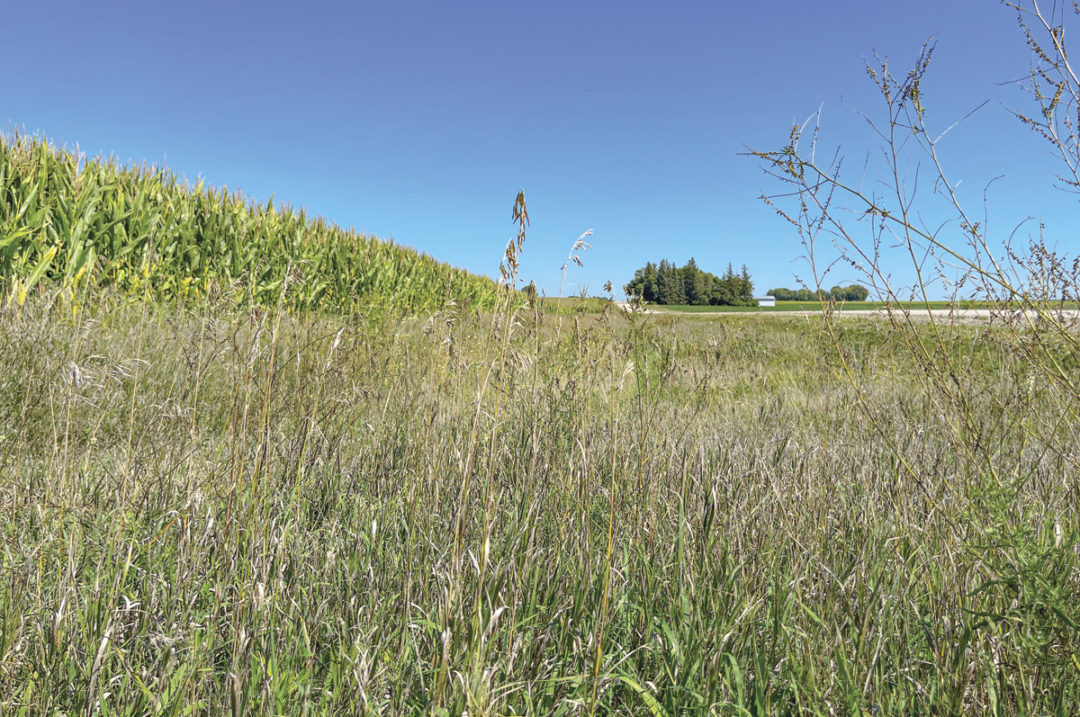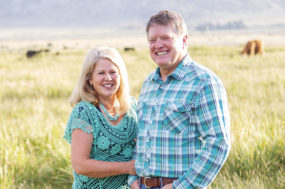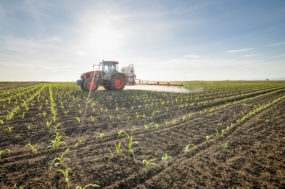Harvesting hay from the right-of-way (ROW) is a common practice in neighboring states such as Oregon, Montana and Wyoming.
According to Current Practices of Harvesting Hay on Highway Rights-of-Way by Kumares C. Sinha, Kang Hu and John D.N. Riverson, Idaho does not allow hay harvesting because of traffic safety concerns and complaints about the issuance of permits.
The abstract reported, “The harvesting of hay on highway rights-of-way has received attention by state highway departments. Several states have already implemented a harvesting program. However, concern has been expressed about traffic safety, lead poisoning and other problems. The pros and cons of a harvesting program are examined, and current practices of the state highway departments are reviewed. The various aspects considered include legal problems, geographic condition, traffic safety, economic benefit, contamination of hay, and aesthetic and environmental concerns. Although the economics of a hay harvesting program may not make such a program implementable in most states at the present time, changes in the local demand for hay and in labor and administrative costs for roadside mowing programs may make such programs feasible in the future.”
“In Idaho, we typically do not allow the right-of-way to be farmed because of several reasons,” says Cathy Ford, roadside program manager for the Idaho Transportation Department (ITD). “ITD maintains our ROWs as natural/native habitats for pollinators and other creatures. Our seed mixes and revegetation practices include native species including native grasses, wildflowers and shrubs (on steep slopes or large widths) to match native habitats around the state. We do not seed with hay or harvestable species. ROWs seeded with native seed mixes do not require irrigation or watering and thus rely only on natural moisture (snow and rain). We do not water or irrigate our ROWs. Another reason we do not allow farmers to bale ROWs is that we have easements with federal landowners (Bureau of Land Management [BLM] and U.S. Forest Service) who specify what we can and cannot do in the ROWs.
"Areas that are prone to fire ignition have a monoculture of annual grass such as cheatgrass and medusahead that is not livestock-friendly and promotes wildfires. These areas are mowed frequently (and in partnership with BLM) to reduce the height of vegetation to a minimum (less than 6 inches). These areas also have 20 feet width fuel breaks (bare areas) near the fenceline. In addition, ITD has maintenance crews that mow and spray herbicides in the ROWs to reduce the spread and infestations of invasive and noxious weeds across the state. We do not allow private landowners to harvest in the ROW because it would spread noxious and invasive weed seeds to other areas including other roadsides, pastures or adjacent land.”
Ford says, “We do allow harvest of our ROWs in specific areas of the state that make sense – such as the Palouse region. There are specific areas of the Palouse region that ITD allows farmers to farm grass species in the ROW for their crop, but the ROWs in the Palouse typically have other grasses that are a little more livestock-friendly. However, most native grasses are not crop-worthy.”
The Palouse region is located in north-central Idaho, southeastern Washington and parts of northeast Oregon. The region has fertile, rolling hills with deep soil.
“Mowing activities are the responsibility of each of our district offices and foremen areas. I do not know how many miles are mowed or how often, as this is something scheduled within the district and foremen areas,” Ford says.
The Wyoming Department of Transportation (WYDOT) Public Affairs said WYDOT mows areas of the ROW in the late summer and early fall. Occasionally, WYDOT receives requests to mow and bale grass in the highway ROW.
WYDOT does permit mowing in the ROWs in approved locations with a forage permit. First preference is given to the property owner adjacent to the highway, then is opened up to others. There is no compensation given to the permittee. Conditions on the permit must be met, and all grass must be cut within the permit area; no selective cutting is allowed. This process helps reduce the mowing performed by WYDOT and helps the permittee provide feed for their animals.
“At UDOT, we have, at any given time, approximately 150 parcels leased for agricultural use,” says Utah Department of Transportation's Right-of-Way Director Charles Stormont. “These parcels are generally land we've acquired as part of our Corridor Preservation program and which are being held for future projects. Agricultural leases are a good fit for such land, and it saves UDOT the significant maintenance costs associated with these long-term holds. It's a win-win situation as tenants gain the benefit of the use of the land for agricultural purposes at a fair cost. Many use it for grazing, and some have hay production.”
“In Utah, likely due to our desert climate, we typically don't have sufficient right-of-way with harvestable hay, and we're not aware of any requests to harvest hay. We also don't have watering systems set up to irrigate the right-of-way; it wouldn't be cost-effective or environmentally sound to use water in that way given our very dry climate,” Stormont says.




.jpg?t=1687979285&width=640)



